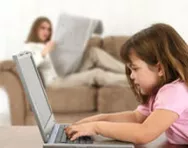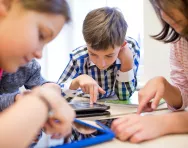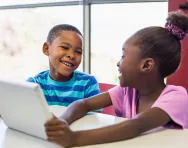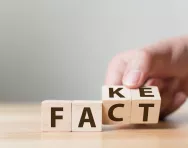Important update from TheSchoolRun
For the past 13 years, TheSchoolRun has been run by a small team of mums working from home, dedicated to providing quality educational resources to primary school parents. Unfortunately, rising supplier costs and falling revenue have made it impossible for us to continue operating, and we’ve had to make the difficult decision to close. The good news: We’ve arranged for another educational provider to take over many of our resources. These will be hosted on a new portal, where the content will be updated and expanded to support your child’s learning.
What this means for subscribers:
- Your subscription is still active, and for now, you can keep using the website as normal — just log in with your usual details to access all our articles and resources*.
- In a few months, all resources will move to the new portal. You’ll continue to have access there until your subscription ends. We’ll send you full details nearer the time.
- As a thank you for your support, we’ll also be sending you 16 primary school eBooks (worth £108.84) to download and keep.
A few changes to be aware of:
- The Learning Journey weekly email has ended, but your child’s plan will still be updated on your dashboard each Monday. Just log in to see the recommended worksheets.
- The 11+ weekly emails have now ended. We sent you all the remaining emails in the series at the end of March — please check your inbox (and spam folder) if you haven’t seen them. You can also follow the full programme here: 11+ Learning Journey.
If you have any questions, please contact us at [email protected]. Thank you for being part of our journey it’s been a privilege to support your family’s learning.
*If you need to reset your password, it will still work as usual. Please check your spam folder if the reset email doesn’t appear in your inbox.
How to help your child become a good digital citizen

Children today are growing up in a world where more and more of their lives take place online. And while as parents, we might feel our primary school children are too young to have a digital presence, the reality is that they need to know how to behave online at increasingly young ages.


Claim four puzzle packs!
- Word Puzzle Packs
- Numeracy Puzzle Packs
- Challenging and exciting | Boost key skills
The concept of ‘digital citizenship’ has become popular in American schools, and is gaining traction in British schools, too. It refers to the norms of using technology safely and responsibly, and preparing children to live in a society that’s governed by technology.
It’s designed to keep kids safe, but also to ensure that the adults in their lives – whether they be teachers or parents – know how to support them.
Here, we take a look at the themes of digital citizenship that apply to our children, and how we can help them embrace their responsibilities.
1. Staying safe online
‘It’s vital that children understand rules and expectations around technology, whether they’re set by their family or their school, and the consequences if they use tech inappropriately,’ says Elijah Lawal, online safety communications manager for Google UK.
Most schools will have a technology policy for pupils, possibly as part of the home-school agreement. Make sure you read this through with your child to ensure they understand what’s expected of them.
‘Perhaps most importantly, children should feel comfortable enough to ask for help when they encounter tough situations online,’ Elijah adds. Try to cultivate a culture of openness where they can talk to you if they’re feeling uncomfortable about something.
You can also use The Safety Centre, created by Google, which features resources and information to help you discuss important topics like data security, privacy controls, and online protection with your child.
2. Protecting their reputation
It’s almost inevitable that at some point, your child will end up on social media. When they do, they need to understand that the things they post online may still be visible far into the future: their ‘digital footprint.’
Inappropriate posts or ‘digital mistakes’ can have a lasting effect on how others see them, and what may seem like a harmless post today could be misconstrued in the future.
A good rule of thumb is if your child wouldn’t want something to be seen by their parents or teacher, DON’T POST IT.
‘You can help by adding privacy settings and keeping them updated,’ Elijah says. ‘It’s important that parents or guardians should always make these decisions with their child.’
3. Protecting their privacy
‘The internet is a reflection of the real world, so often, the same advice applies to safety online as it does in real life,’ Elijah says.
‘This means children should be careful when talking to strangers online – even if they’re just following their favourite gamer or chatting with people in an app.’
Teach your child to block and report any strangers who make them feel uncomfortable or ask for private information like an email address, particularly if they are offering gifts or asking specific favours in return.
Information like their phone number, address and the name of their school shouldn’t be given out unless they are 100% certain they know and trust someone. Encourage your child to always run these decisions past you first.
4. Using the internet as a resource
There’s simply no match for the internet when it comes to providing kids with the information they need, when they need it. But using the internet to research homework and class projects also comes with responsibility.
Talk to your child about what makes a source reliable, and what should make alarm bells ring. Make them aware of how easy it is to end up viewing inappropriate material in just a matter of clicks (although good family settings should reduce the risk of this happening).
It’s also a good opportunity to talk about plagiarism and how to gather information that your child can then put into their own words.
5. Talking to people online
‘Digital technology means we are now connected with the world in so many ways: via email, text and instant messages; in words, pictures and videos; using phones, tablets, and laptops,’ says Elijah.
It’s important that your child understands the potential dangers of talking to people online, even if they think they know who they are.
In apps and games, people sometimes pretend to be someone else as a joke, or to mess about, in a mean way. Sometimes, they impersonate people to steal personal information.
‘If someone your child doesn’t know tries to connect with them, the safest thing to do is not respond, or to tell a parent or adult that they don’t know the person and ask for help,’ Elijah advises.
6. Shopping and purchasing online
In terms of convenience, the internet has revolutionised shopping, but we’ve all heard stories of kids buying random stuff with one click without their parents’ approval, or racking up huge bills through in-app purchases.
You should be able to set your devices up so your child isn’t allowed to make purchases without your consent, but that’s no substitute for teaching them how to shop responsibly – and with supervision – online.
You can also take the opportunity to remind them not to share their bank details online, and not to send money to anyone requesting cash transfers or promising vast riches in exchange for their card number.
7. Looking out for their friends
According to Bullying UK, 56% of young people have witnessed bullying online, so kids have a responsibility to look out for their friends.
‘If you see mean or bullying behaviour, report it using online reporting tools, or by telling a parent, teacher, friend or sibling,’ Elijah advises.
Young people are also increasingly looking for mental health support online, so children need to be aware of the signs that might suggest a friend is struggling – for example, talking about low mood, self-harm, or even suicide – and know where to get help.
By all means they should talk to and support their friend, but make sure they know to tell a trusted adult if they’re worried about a friend’s safety.
8. Being respectful – to themselves as well as others
‘Sometimes, we all need a reminder that behind usernames and profile pictures, there is actually a real person with real feelings, and that we should treat them that way,’ Elijah says.
A good rule to live by online is to ‘treat others as you would like to be treated.’ What sounds like banter to one person might feel like bullying to another, and tone doesn’t always come across well online: your child may think it’s obvious that they’re just joking, when actually, their words are genuinely hurtful.
‘Children can set a good example online, by being a positive voice to their friends, not encouraging bad behaviour, and not liking or responding to potentially hurtful comments or posts,’ Elijah explains.
And keep reminding them that if they’re feeling uncomfortable about anything they’ve seen or done online, telling an adult is always the right thing to do.
Image copyright: UKBlackTech








